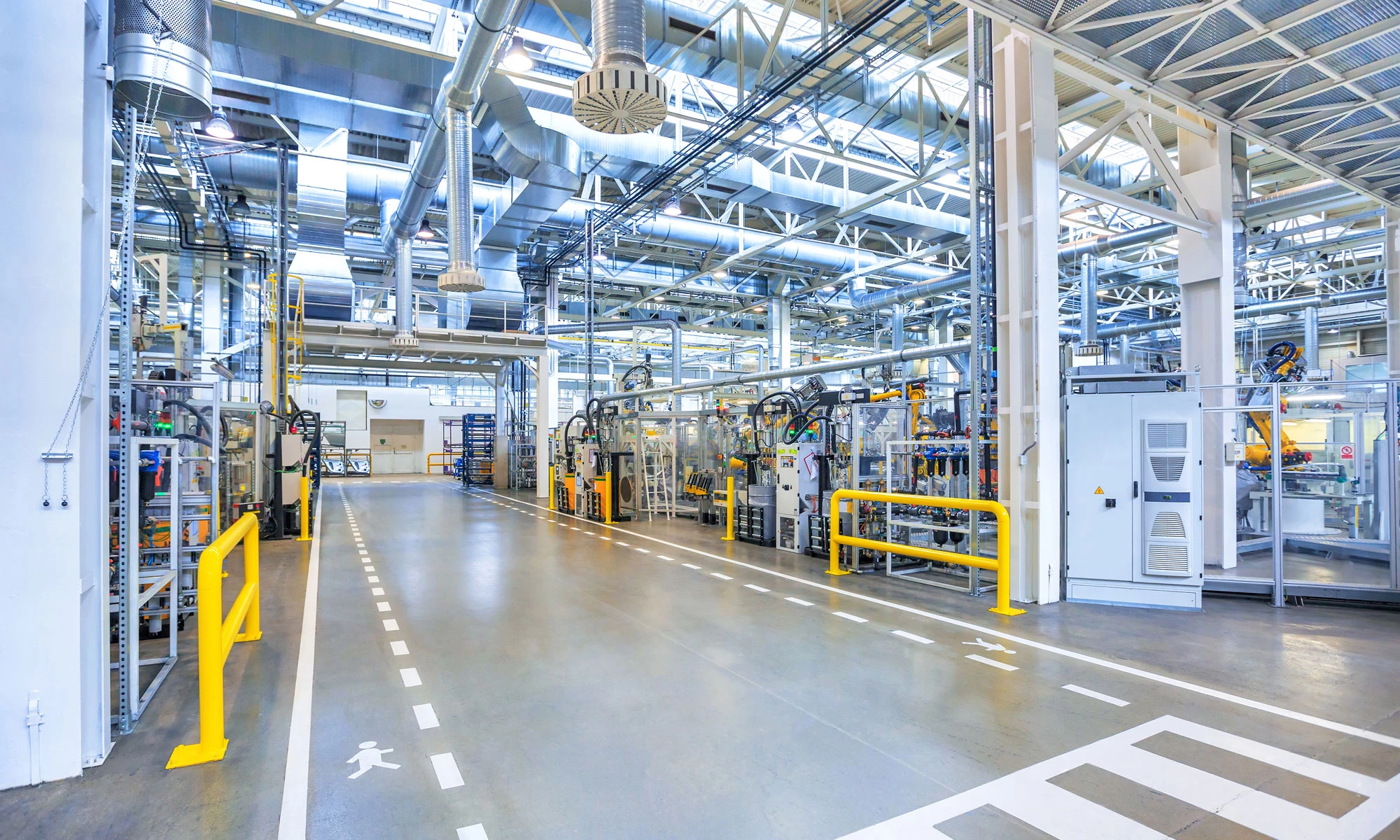Media filling in final assembly
As a rule, in the automotive industry the vehicles are filled with the required operating media (such as brake fluid, refrigerant for the air conditioning system, coolant, windscreen washer fluid, etc.) in the final stage of final assembly (usually when it is already on its own wheels). The challenge is to inspect the empty vehicle systems for leaks within 1–2 minutes and to load them fully automatically with the specified quantities and filling levels, thus ensuring process reliability. This occurs in closed circuits (such as the cooling system) over several process steps with vacuum and pressure phases.
The process steps themselves have not changed fundamentally over the years, but the vehicle systems themselves have become much larger and more complex in order to provide comfort functions or to cool additional control units.
The demands placed on system technology, also due to the integration of ever new variants, have thus increased. This complexity must be taken into account in the project planning of such process plants, since the plant technology often has to be adapted over its own product life cycle.
From plant to process topic
Differences in the vehicle architecture of combustion and electric vehicles
In principle, there is no need to refuel an electric vehicle with fuel for the first time; there is no combustion engine. Basically, the drive system is reduced to the electric motor(s), the power electronics and the battery. However, these components require a much more sensitive temperature management than a classic combustion engine in order to work with optimum efficiency on the one hand and to avoid permanent damage on the other.
Cooling, for example of the battery, can take place via the air-conditioning system circuit (air-conditioning system) of the vehicle or via the cooling system. Cooling via the kima system is relatively easy to implement (additional evaporator on the battery), but only functions in a limited temperature range (outside temperatures). With modern vehicles such a thing can only be tolerated with mild hybrid vehicles but not with purely electric vehicles.
Cooling or temperature control of the battery via the vehicle’s cooling system (with a water-glycol mixture as cooling liquid) has the advantage that the system can be cooled or even heated more effectively so that the battery can always be operated in the optimum temperature window for its efficiency.
Cooling of electric drives more complex than of internal combustion engines
Challenges in the filling of radiator systems in electric vehicles
This makes the cooling systems of modern electric vehicles larger and more complex than those of comparable combustion vehicles. A cooling circuit can be divided into subsystems by electrically switched valves. These valves must then be controlled by the process plant during the filling process in order to completely fill the circuit. Until now, such control of vehicle control units was only required for brake filling (ABS valve block).
A high-voltage battery also has much “finer” (capillary) lines than a combustion engine, so that the system resistance during evacuation/filling is significantly greater than with a classic combustion cooling circuit. The risk of air pockets remaining in the system during radiator filling is high. The risk of component damage due to cavitation increases, as does the risk that the sensitive components of the electric drive system will be permanently damaged very quickly if they are not adequately cooled.
The challenge lies in the fact that the filling processes are subject to physical laws that cannot be arbitrarily optimized. In short, if the system is twice as large and complex, the filling process will take a correspondingly long time. With the exception of purely electric vehicle production, however, electric vehicles are built on the same assembly lines as hybrid and pure combustion vehicles - at least for the classic OEMs. A longer process time means a higher demand for production cycles or special solutions to shift a single process step.
The integration of an electric vehicle into an existing production facility is therefore a challenge from the point of view of the special field of “media filling”.
Integration into existing filling lines is a challenge

